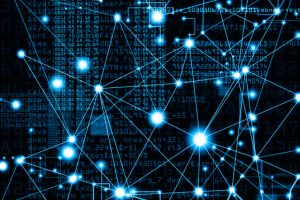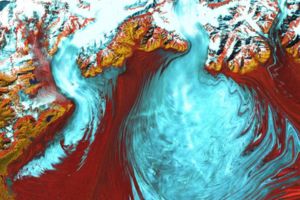What is… Geospatial Data?
What is Geospatial Data?
 Geospatial data is a type of data used to identify the geographic location of an object or feature on the Earth’s surface. It is often used in mapping, navigation, and location-based services, as well as in geographic information systems (GIS) for a variety of applications. It is the basis of many decisions we make in our daily lives, from the route we take to work to the store we shop at.
Geospatial data is a type of data used to identify the geographic location of an object or feature on the Earth’s surface. It is often used in mapping, navigation, and location-based services, as well as in geographic information systems (GIS) for a variety of applications. It is the basis of many decisions we make in our daily lives, from the route we take to work to the store we shop at.
This type of data is used to identify, measure, and analyse the physical features of the Earth’s surface. From mapping the location of natural resources to providing the infrastructure for navigation, geospatial data plays a vital role in many industries. By understanding what geospatial data is and how it can be used, we can better understand our world and make better decisions in our day-to-day lives.
How is Geospatial Data Used?
When it comes to mapping and navigation, geospatial data is a game-changer. The data is used to create detailed maps of different regions, allowing for easy navigation, precise planning, and insightful analysis. Additionally, GPS systems utilise geospatial data to pinpoint a user’s location, track their movements, and even plan routes. From personal navigation to commercial transportation and logistics, the applications of geospatial data in mapping and navigation are endless.
 Geospatial data also plays a crucial role in monitoring and tracking changes in the Earth’s climate, such as temperature, precipitation, and sea level rise. By utilising geospatial data, scientists and policymakers can predict future changes in the climate and understand the potential impacts of these changes. This information is vital for making informed decisions about how to mitigate and adapt to climate change.
Geospatial data also plays a crucial role in monitoring and tracking changes in the Earth’s climate, such as temperature, precipitation, and sea level rise. By utilising geospatial data, scientists and policymakers can predict future changes in the climate and understand the potential impacts of these changes. This information is vital for making informed decisions about how to mitigate and adapt to climate change.
Agriculture is another industry that heavily relies on geospatial data. This data is used to map and monitor crops, soil, and weather patterns. By utilising this information, farmers can improve crop yields, manage pests and diseases, and optimis irrigation systems. Furthermore, geospatial data is used to analyse and predict crop yields, which is vital for farmers and food suppliers to make informed decisions about planting, harvesting, and storing crops.
Geospatial data plays a critical role in natural disaster response an essential tool for emergency responders to predict and plan for the impact of natural disasters. This data is used to map and track natural disasters such as hurricanes, earthquakes, and floods, providing valuable information on the potential impact of these events. Emergency responders can use this information to plan for evacuation and recovery efforts, ensuring that they are as prepared as possible to respond to the disaster. By analysing data on weather patterns, geological activity, and other factors, scientists can even predict the likelihood of natural disasters, enabling them to provide early warning systems, save lives and reduce the damage caused by these events.
What Are the Different Careers Available in Geospatial Intelligence?
Geospatial intelligence allows experts to analyse and make decisions on complex environmental, political, and economic issues. Professionals in this field must be able to interpret data from multiple sources and have a strong knowledge of mapping tools and GIS software. As such, there are many different career paths available for those interested in working in geospatial intelligence.
 One of the most popular career paths within the field is that of a geospatial analyst. Geospatial analysts use their understanding of the technology to study satellite imagery, aerial photographs, and other data sources to create visual representations of terrain and identify potential areas of interest. They also use geospatial data to map population distributions, track the spread of disease, and provide intelligence to governmental agencies and private businesses.
One of the most popular career paths within the field is that of a geospatial analyst. Geospatial analysts use their understanding of the technology to study satellite imagery, aerial photographs, and other data sources to create visual representations of terrain and identify potential areas of interest. They also use geospatial data to map population distributions, track the spread of disease, and provide intelligence to governmental agencies and private businesses.
Other careers available in geospatial intelligence include cartographers, surveyors, remote sensing technicians, and GIS technicians. Cartographers create detailed maps of geographic areas while surveyors measure boundaries, elevations, and other features of land surfaces. Remote sensing technicians operate remote sensors such as satellites to gather data from various sources, while GIS technicians develop maps and spatial databases for analysis.
In addition to these more traditional careers, the field of geospatial intelligence has seen the emergence of new roles such as geospatial intelligence officers, who combine the skills of a geospatial analyst with those of an intelligence officer to provide decision makers with strategic advice. Finally, geospatial scientists are responsible for developing new methods for collecting and analysing geospatial data.
A Career With Geospatial Data
- Geospatial intelligence analyst: collect and analyze geospatial data to support intelligence activities and provide decision-makers with timely and relevant information.
- Remote sensing scientist: develop and implement methods for collecting and analyzing remote sensing data to extract information about the earth’s surface.
- GIS specialist: design, develop, and maintain geographic information systems (GIS) that help organizations visualize, analyze, and understand data in a spatial context.
- Cartographer: create and design maps, charts, and other geospatial products that accurately represent the Earth’s surface and its features.
- Surveying and mapping technician: conduct surveys and gather data to create maps, charts, and other geospatial products that support engineering and construction projects.
- Location intelligence analyst: analyze and interpret location data to support business decisions and strategic planning.
- Geospatial data scientist: develop and apply statistical and machine learning techniques to geospatial data to extract insights and support decision-making processes.
- Geospatial software developer: design, develop, and maintain software applications that support geospatial analysis and visualization.
Geospatial Data Salary Guidelines
- Geospatial intelligence analyst – $62,823
- Remote sensing scientist – $79,901
- GIS specialist – $65,463
- Cartographer – $77,887
- Surveying and mapping technician – $52,154
- Location intelligence analyst – $89,586
- Geospatial data scientist – $106,601
- Software developer – $101,573
Geographic Hotspots for Geospatial Data Career
The US is a major player in the geospatial industry. Discover which US universities geospatial organizations are actively hiring from here.
- Washington DC-Baltimore
- New York
- San Francisco Bay
- London
- Los Angeles
The beauty of a career in geospatial data is that there is always room for growth and development. The field is constantly evolving as new technologies are developed, and new applications for geospatial data are discovered. This provides ample opportunity for professionals to stay up to date with the latest advancements and continually enhance their skills.
A career in geospatial data offers not only a rewarding and fulfilling professional path but also a dynamic and ever-changing environment. With the increasing demand for geospatial data, now is a great time to consider a career in this field.
Check out our space jobs page to discover the amazing opportunities available to you in this exciting sector.
-
What Is… Synthetic Aperture Radar (SAR)?
Explore the capabilities and applications of Synthetic Aperture Radar in the space sector.Read More -
What Is… a Nano Satellite?
Explore the mini revolution of nano satellites and their impact on the space industry. Get insights on their size, functions, and potential future uses.Read More -
What Is… Space Debris?
Understand the issue of space debris and its impact on space missions. Get informed about the ongoing efforts to clean up space.Read More